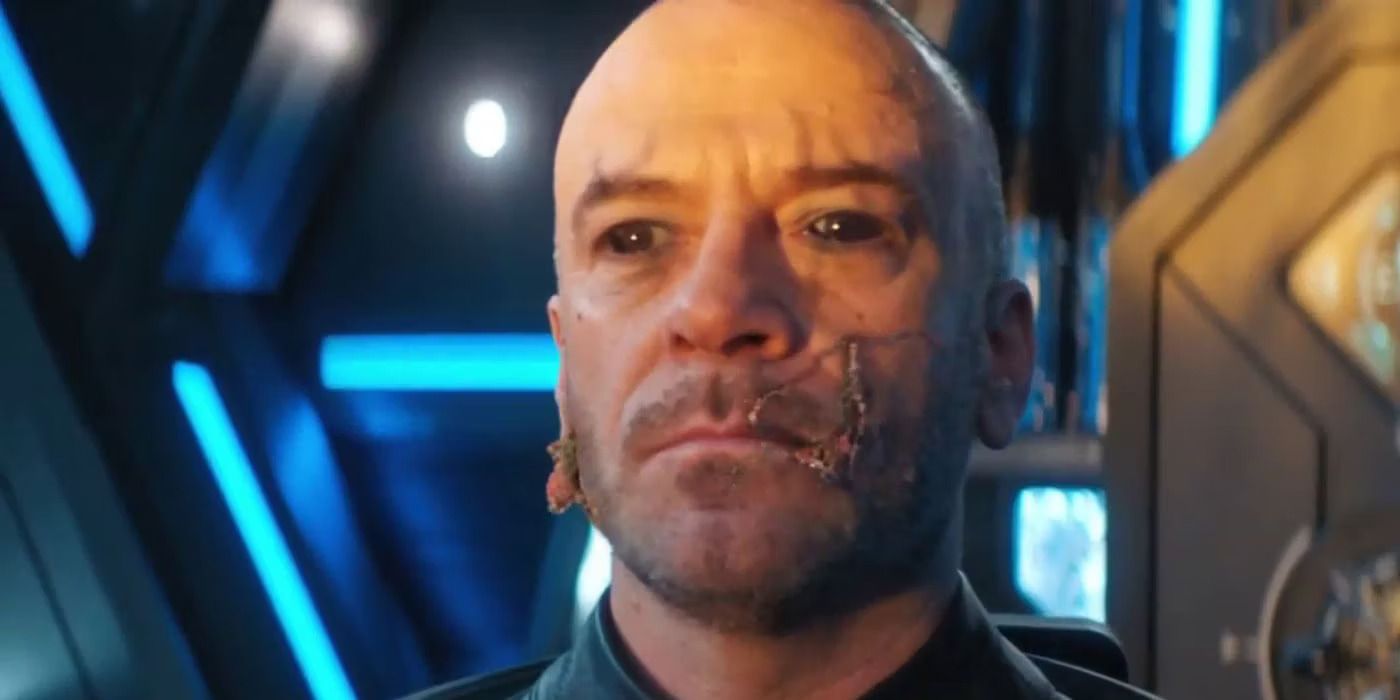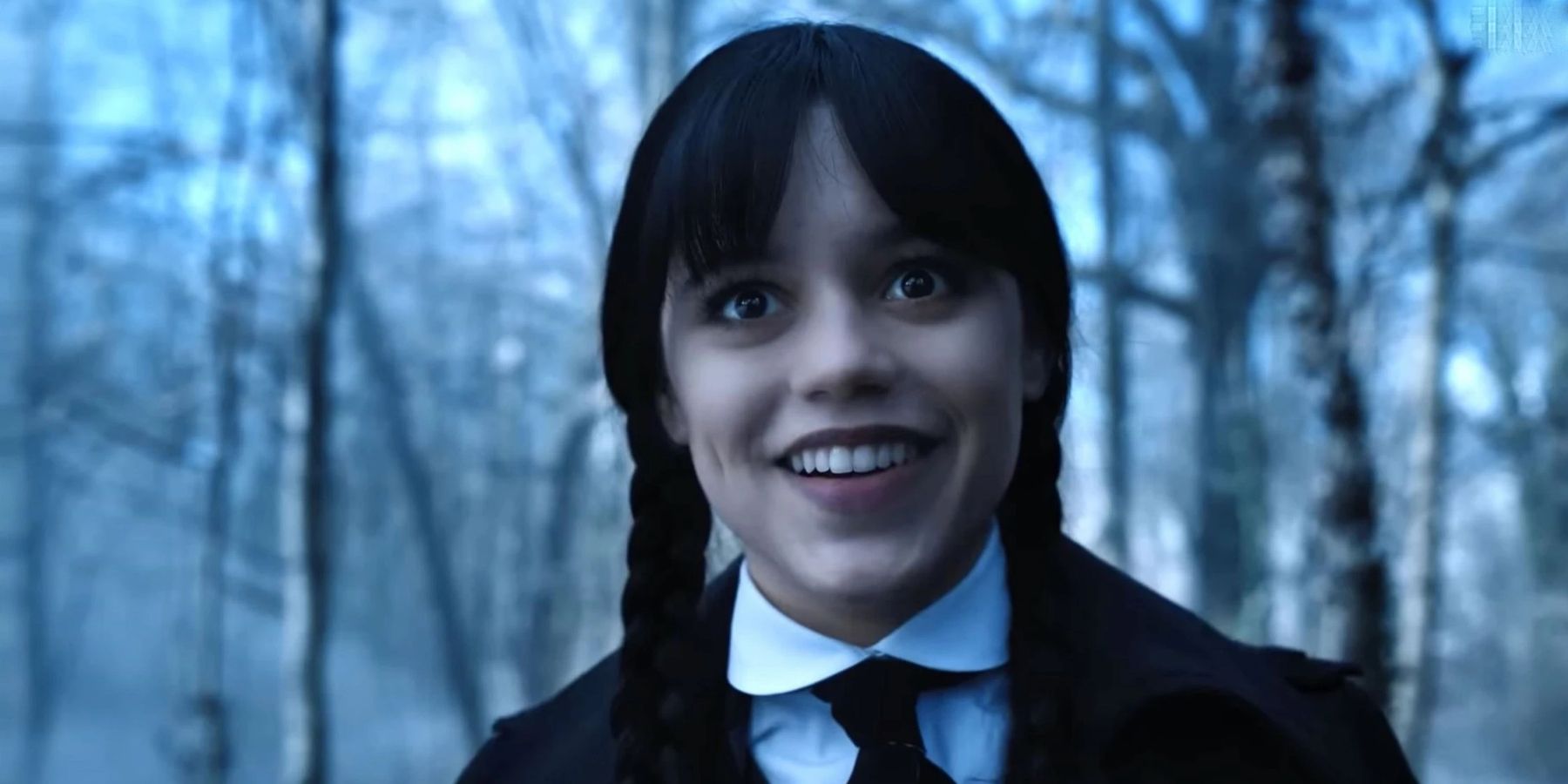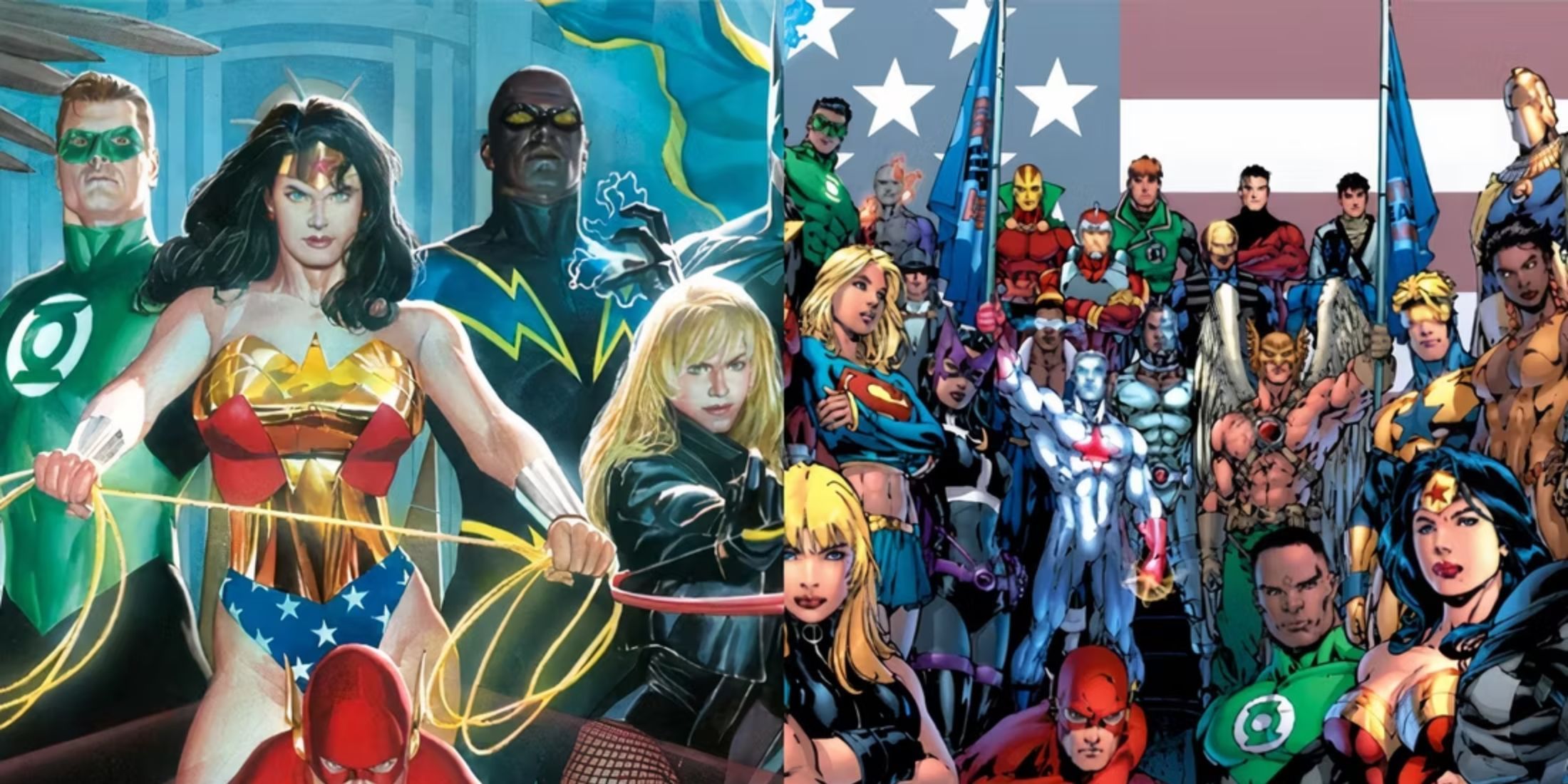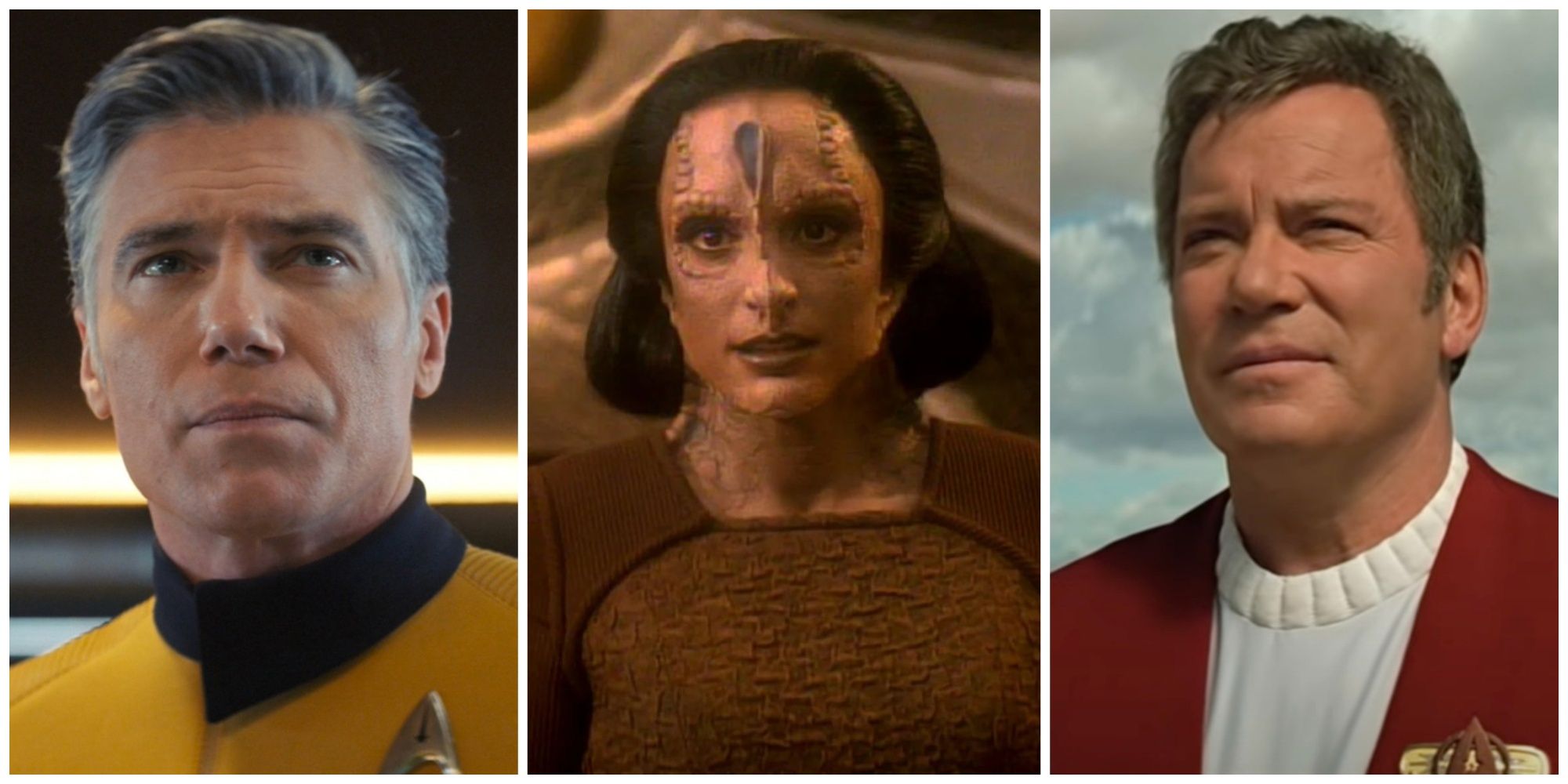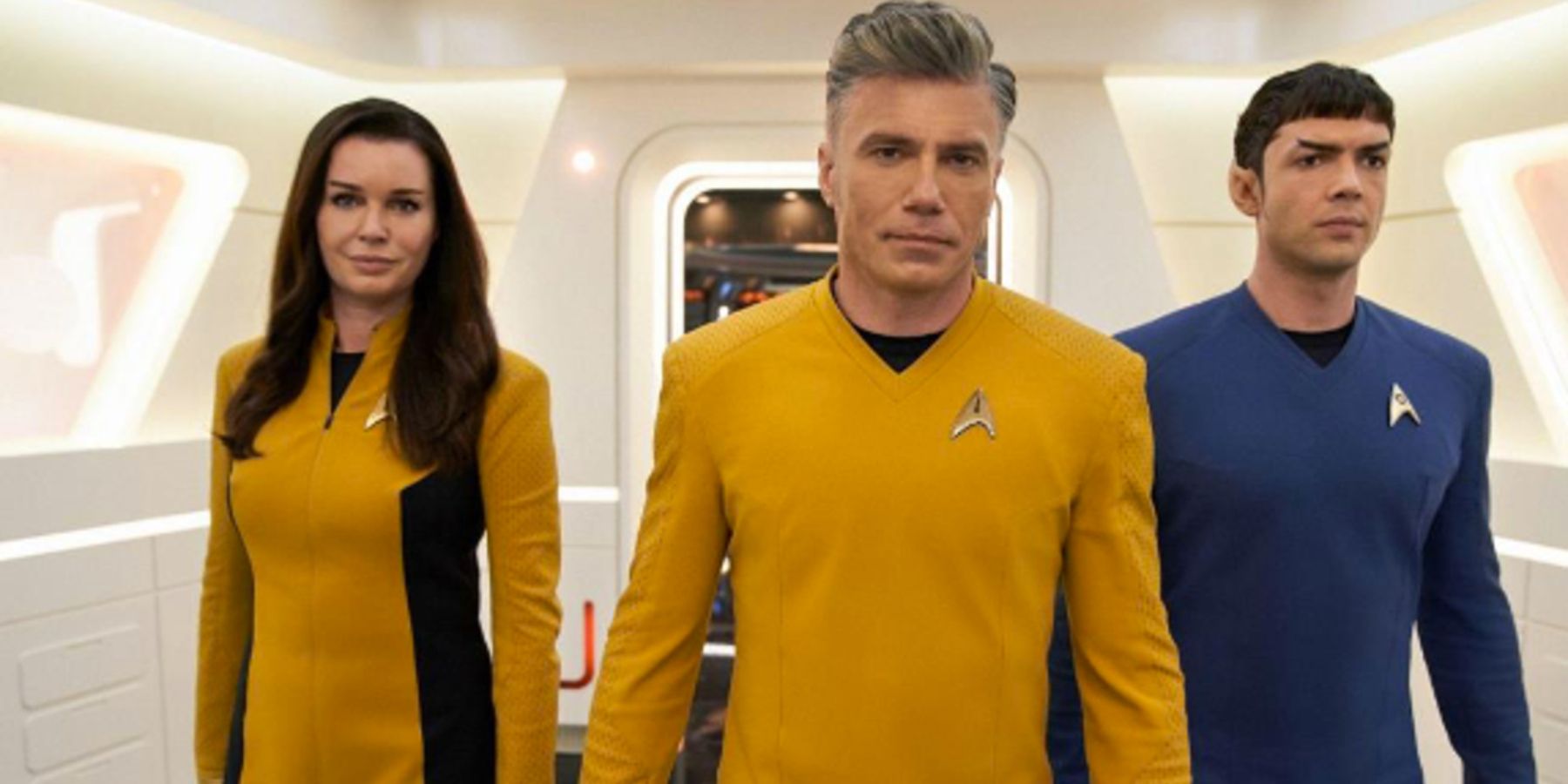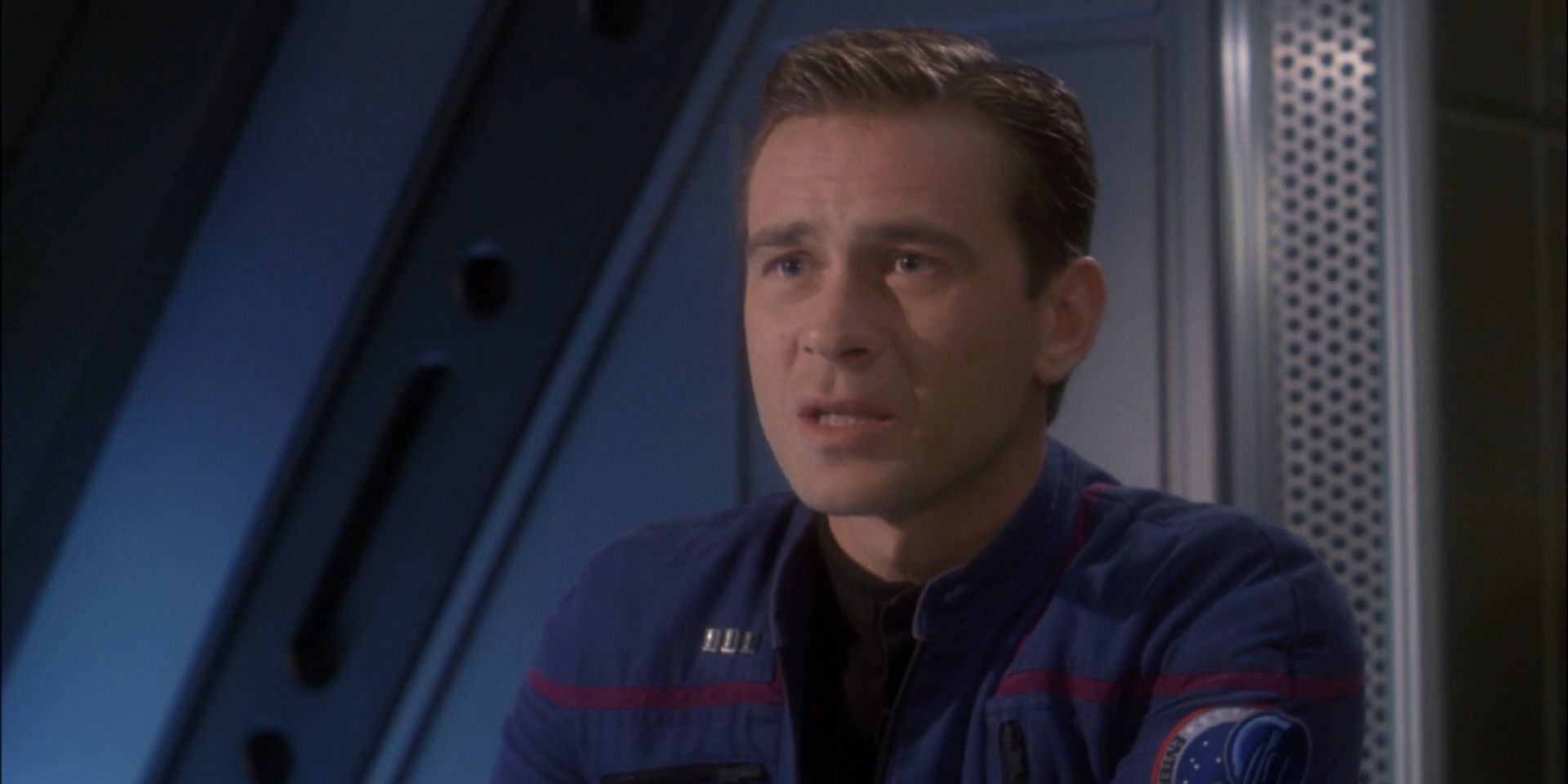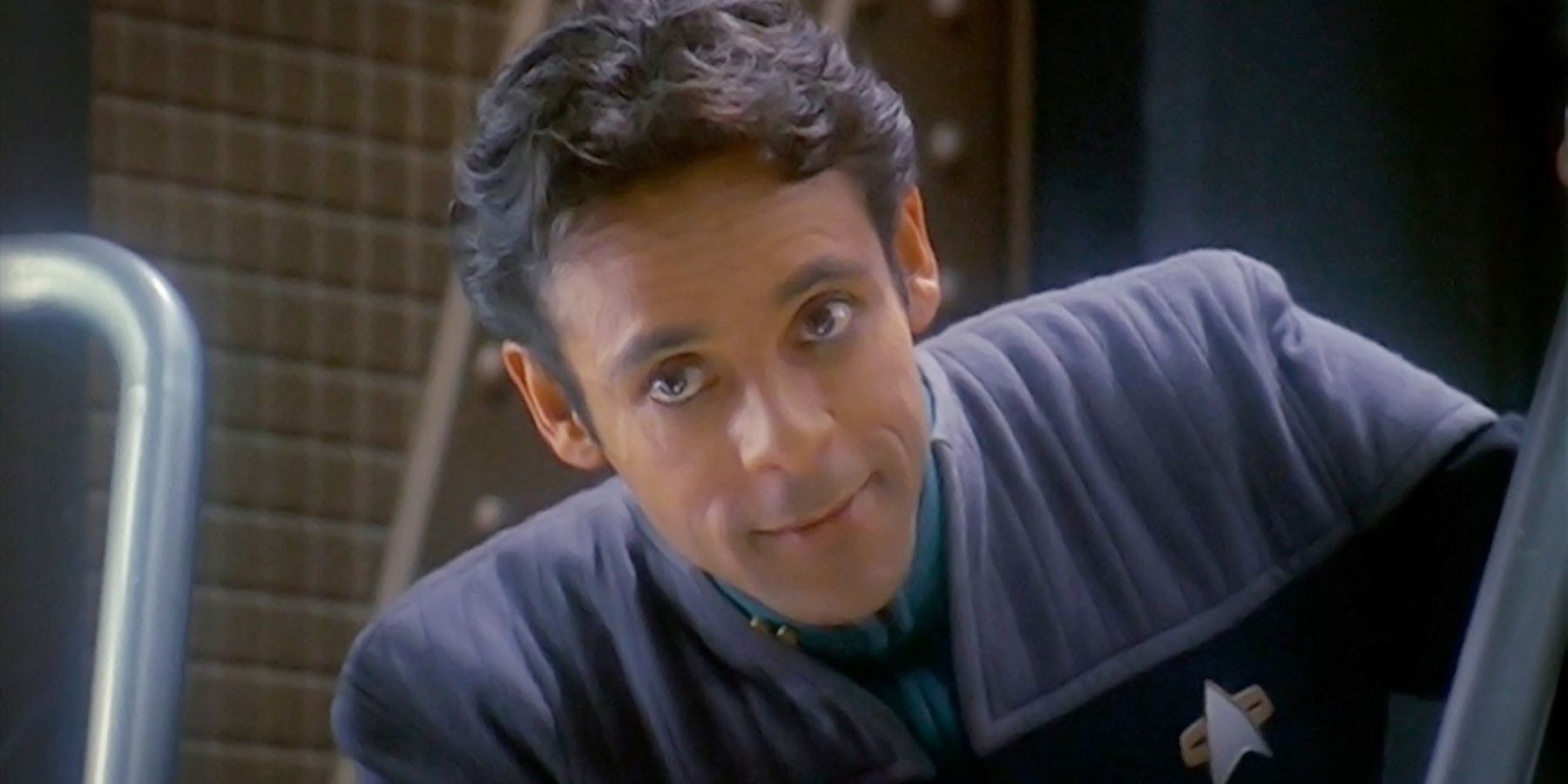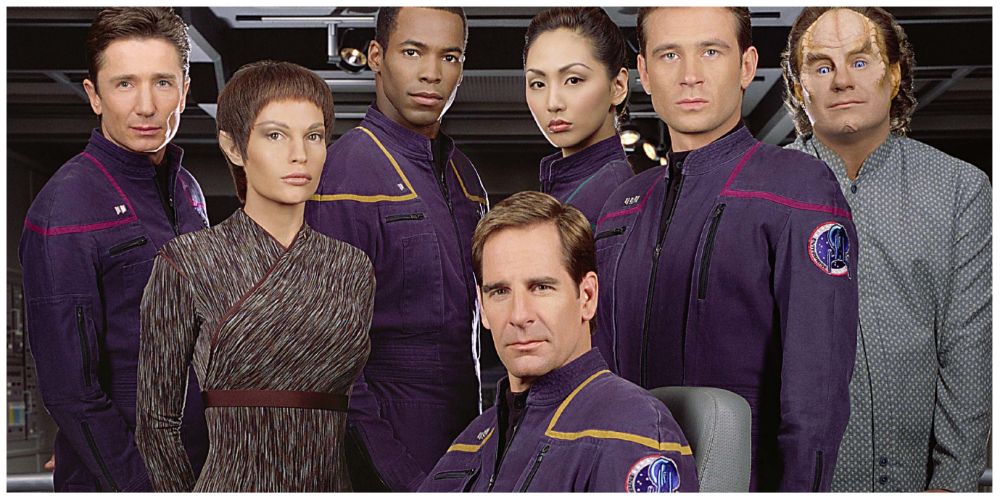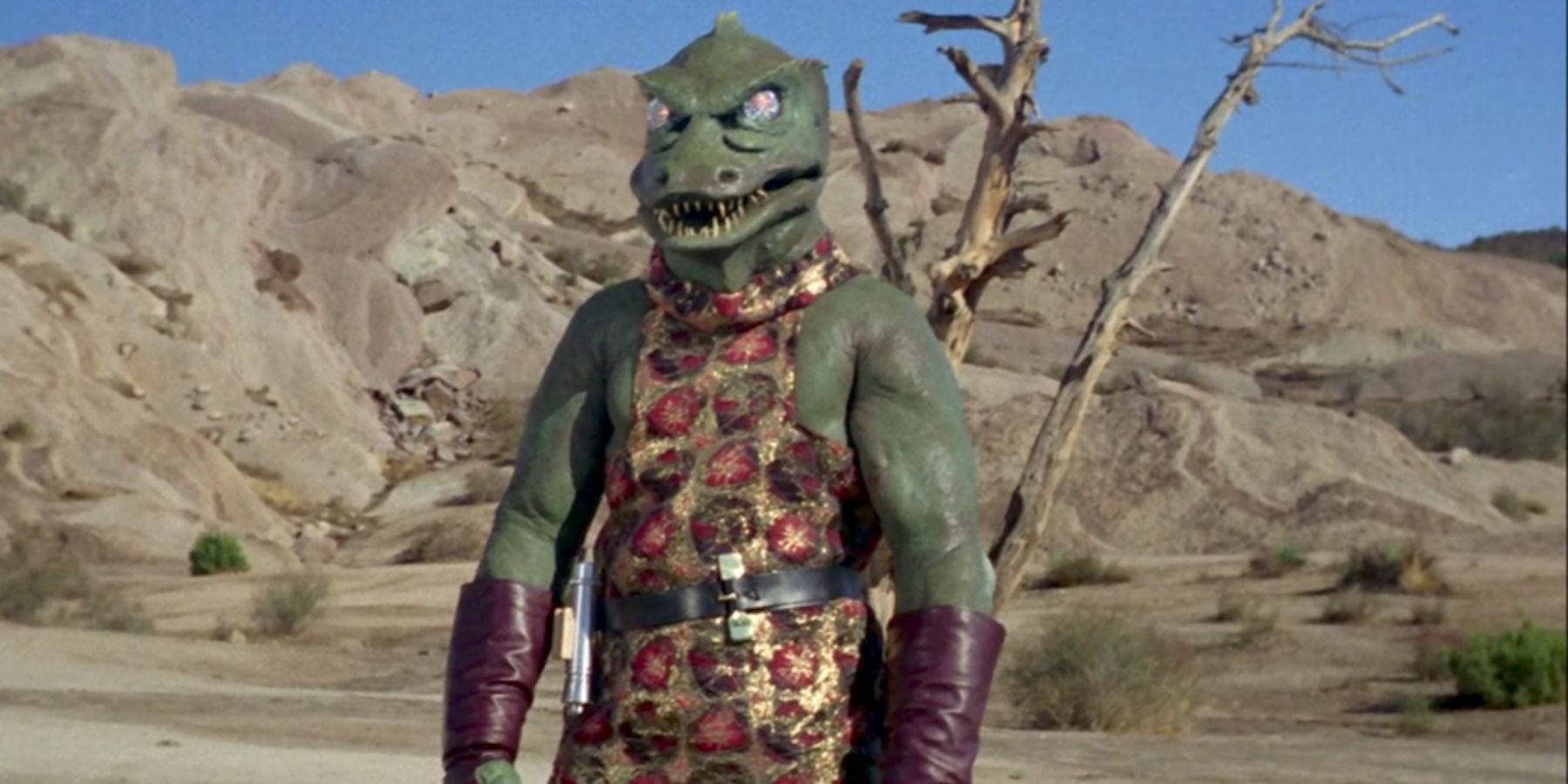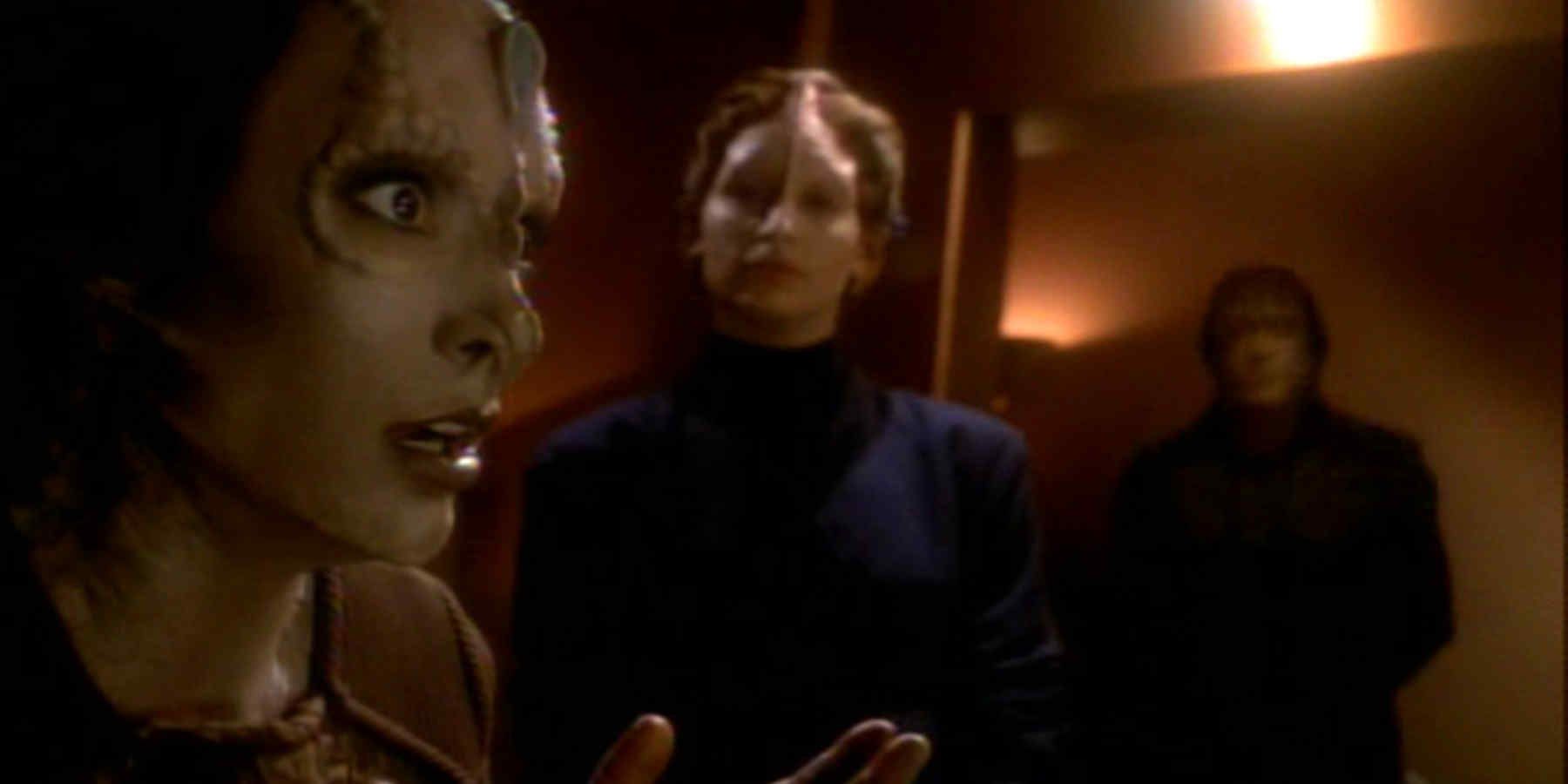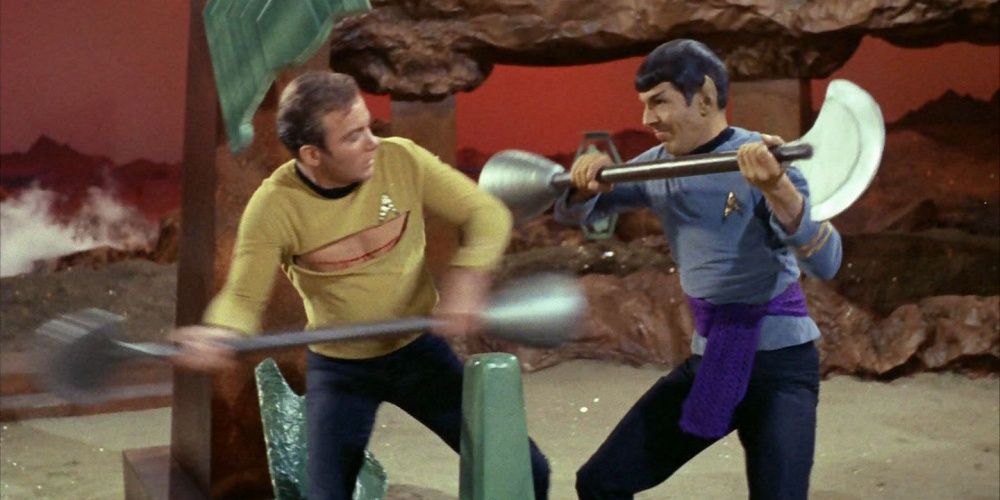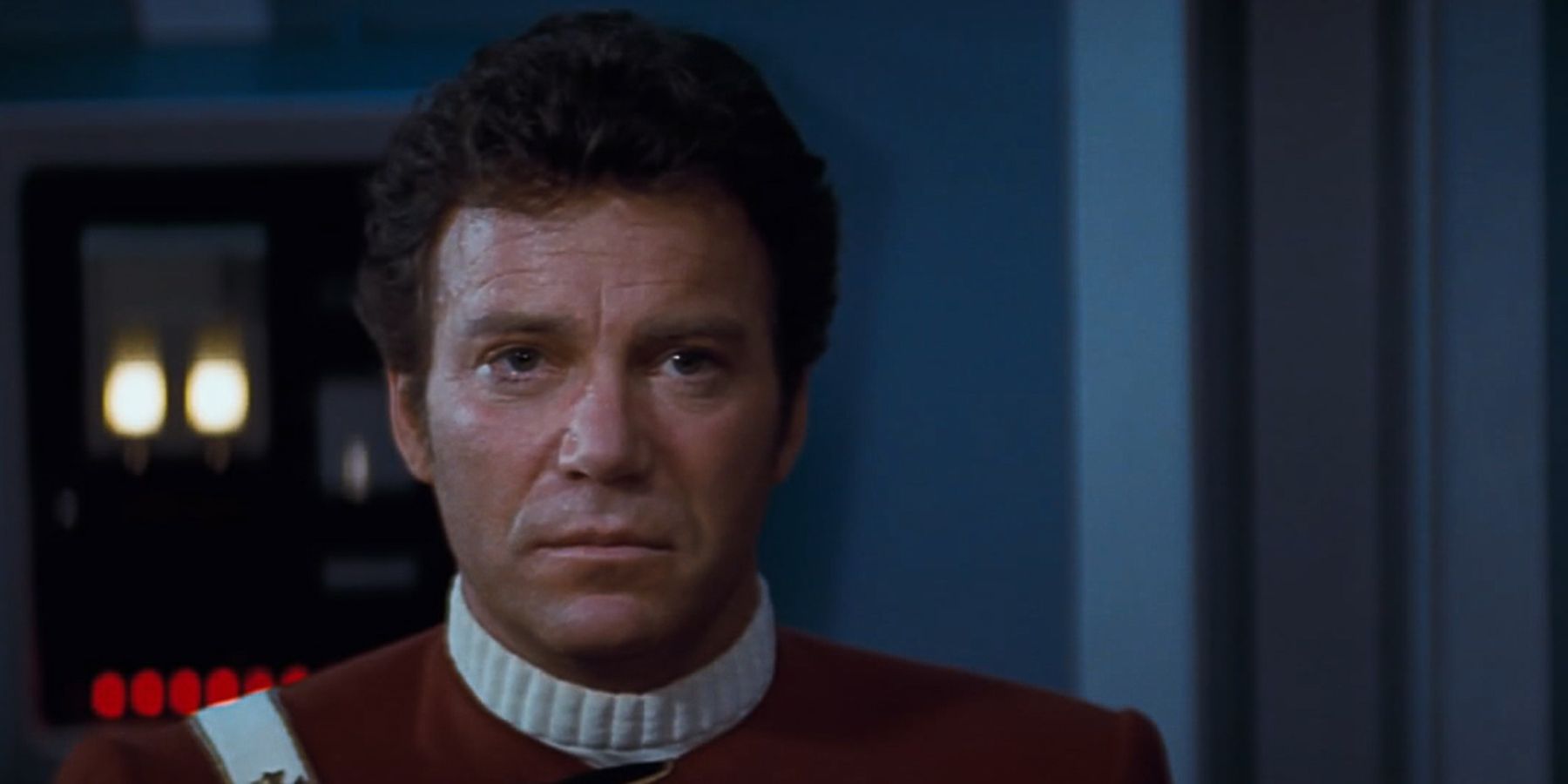In February 1970, Bantam Books published the first original Star Trek novel. James Blish's Spock Must Die! received mixed reviews from critics, but it laid the foundation for many hundreds of further novels. Perhaps the golden era of Star Trek prose was under Pocket Books, who produced an ambitious continuation of TNG and DS9 long before Star Trek: Picard.
Some of the tie-in novels are good, some are bad, and some are just plain strange. From vanity projects to starship-sized plot holes, Star Trek's authors went where no one had gone before (and sometimes where they shouldn't have gone). Though they may be on the stranger side, here are a few books that fans of the franchise will doubtless enjoy.
8 The Enterprise War - John Jackson Miller
John Jackson Miller's 2019 novel answers a pertinent question: where was the Enterprise during Star Trek: Discovery's Federation–Klingon War? Miller shows Pike's Enterprise caught in a different war between the Boundless and the Rengru, aliens who hope to use the starship to tip the scales in their favor.
The Enterprise War has an exciting plot, but stumbles slightly when it comes to reconciling the Pike era with the rest of contemporary Trek. Spock's references to Michael Burnham seem out of place alongside obscure characters from Star Trek's failed pilot, while the Enterprise's saucer separation recalls TNG rather than TOS or Discovery. Miller's novel walks a fine line between anachronisms and tropes. The result is a weird blend of eras, but one that readers are sure to enjoy.
7 The Good That Men Do - Andy Mangels & Michael A. Martin
Few fans were impressed when Star Trek: Enterprise ended by killing off one of its crew. In terms of both scriptwriting and direction, the noble sacrifice of engineer Trip Tucker is an anticlimax. This shortcoming inspired authors Andy Mangels and Michael A. Martin to consider an alternative: what if Tucker's death was a hoax?
The Good That Men Do (2007) claims that Tucker never died; instead, he left the Enterprise to work for Section 31. This coverup allowed him to investigate a new threat posed by the Romulans. The book holds a strange place in Star Trek canon: it is as much an apology as it is a novel, although the Romulans' machinations make for an entertaining read.
6 Disavowed - David Mack
While the Star Trek Relaunch series provided fans with some franchise highpoints, it had started to stumble by the time of David Mack's Disavowed (2014). Six years earlier, Mack had torn up the status quo with his Destiny trilogy, focusing on a massive Borg invasion. The trilogy is excellent—but its fallout left subsequent novels unsure of where to take the series.
Mack's story, centered on Julian Bashir, reinvents the Star Trek novel as a tense espionage thriller as the Starfleet doctor and Section 31 operative travels to the Mirror Universe to halt a scheme by the evil Breen. Mack's prose is propulsive, but Disavowed represents the Star Trek world at a crossroads. The book's weirdness lays not in its writing, but in its attempt to reinvigorate the series with a focus on espionage rather than exploration.
5 Broken Bow - Diane Carey
Star Trek's writing has been the subject of parodies aplenty, from shows like The Orville to movies like Galaxy Quest. In 2020, the franchise itself got in on the fun, with cartoon series Lower Decks spoofing on Star Trek's tropes. Yet Lower Decks was not the first time that Star Trek's own writers took a swipe at the franchise. The 2001 novelization of "Broken Bow" derided the Star Trek: Enterprise episode it was meant to retell.
Author Diane Carey wrote extensively for Star Trek's novels (the hero of her 2000 novel Challenger was written to resemble Enterprise's Scott Bakula, though the book predated his casting). Yet when it came to novelizing Bakula's first real adventure, Carey was so unimpressed with the script that she used the characters' internal monologues to criticize the story's plot. The author was allegedly blacklisted for her mischief, but she turned an otherwise by-the-numbers novelization into a sneaky practical joke.
4 A Singular Destiny - Keith R.A. DeCandido
Readers might expect a sequel to TNG and DS9 to feature a hero like Captain Picard, or a fan favorite like Kira Nerys. Yet although Keith R.A. DeCandido's 2009 novel does feature DS9's Ezri Dax, its star is diplomat Sonek Pran, a wholly original character. This stylistic deviation allows A Singular Destiny to interrogate the state of the Relaunch universe. The Borg may be gone, but a new threat is rising in the form of the Typhon Pact, an alliance of several hostile states including the Breen and the Gorn.
Despite the scope of its universe, Star Trek can become bogged down by revisiting the same characters and tropes. DeCandido's novel bucks this trend, making this immersive political thriller an essential chapter in the Relaunch saga.
3 Fearful Symmetry - Olivia Woods
Viewers of DS9 may recall the episode "Second Skin," in which Bajoran Kira Nerys was disguised as a Cardassian. Fearful Symmetry claims that the woman that Kira impersonated, Iliana Ghemor, was also altered to look like Kira, but fell into the clutches of Gul Dukat, who imprisoned and abused her. Driven mad, the impostor plots her revenge in Olivia Woods' 2008 novel.
While it's odd that Dukat never mentioned his prisoner, the novel's true weirdness is its two-in-one physical format. Fearful Symmetry is made up of two narratives: the front cover depicts Kira, while the rear is an alternate cover showing Ghemor. Starting the book in one direction shows Kira's investigation into her duplicate, while starting in the opposite direction provides the troubled life of Ghemor. This parallel structuring allows the novel's form to mirror its content, a clever gimmick.
2 Killing Time - Della Van Hise
The possibility of a deeper, potentially romantic bond between Kirk and Spock has intrigued fans for decades (the term "slash fiction" is attributed to stories about the pair), but Star Trek's writers were unwilling to offer any confirmation. Father of the franchise Gene Roddenberry was particularly opposed to the idea. He was displeased, to say the least, when author Della Van Hise snuck suggestive material into her 1985 novel.
First editions of Killing Time (which involves the Romulans altering history to try and defeat the Federation) were recalled and destroyed, although some were purchased by fans. A revised edition removed the offending content. Rumors circulated that an even more explicit version existed, although Van Hise denied these claims. If nothing else, Killing Time demonstrates the importance of checking a book before it's sent to the printers.
1 The Return - Garfield Reeves-Steven & William Shatner
Actor Leonard Nimoy was so impressed by Star Trek II: The Wrath of Khan, in which his character died, that he asked for Spock to return from the dead. William Shatner, on the other hand, was so unimpressed by Kirk's death in Star Trek: Generations that he decided to take matters into his own hands, co-writing a series of novels in which a resurrected Kirk continues the fight against evil.
The resulting Shatnerverse (comprising ten novels by Shatner and Judith and Garfield Reeves-Steven) is generally considered non-canon even by novel fans, with some regarding it as an ego trip for Shatner. Kirk's transition into a quasi-Messianic figure certainly has all the hallmarks of a vanity project, as does his role in the total defeat of the Borg in 1996's The Return. The Shatnerverse novels may not fit into any version of canon aside from their own, but they represent an interesting diversion for those who like their books heavy on fan-service and light on common sense.

